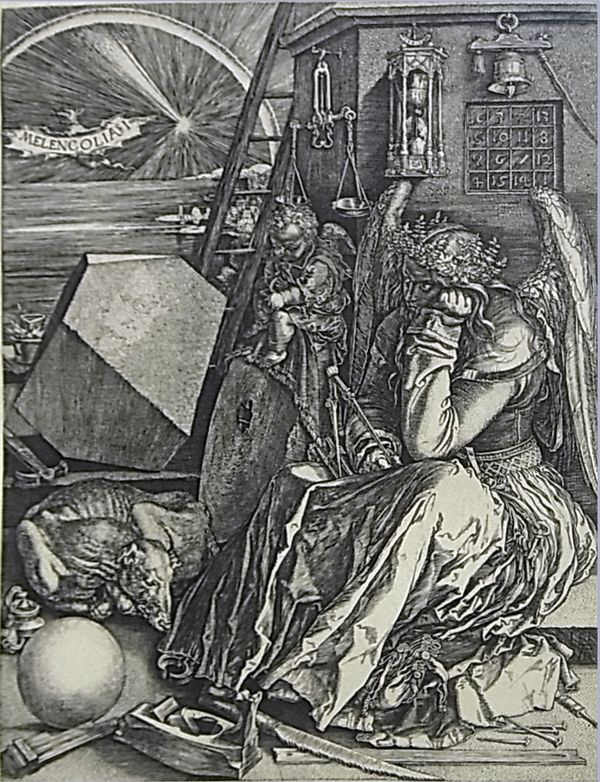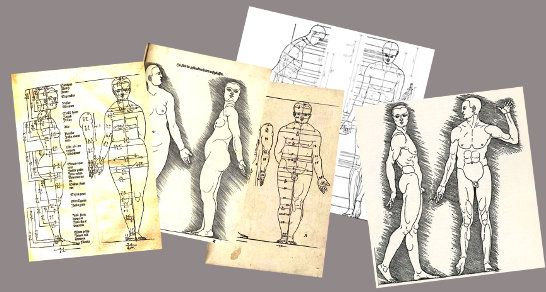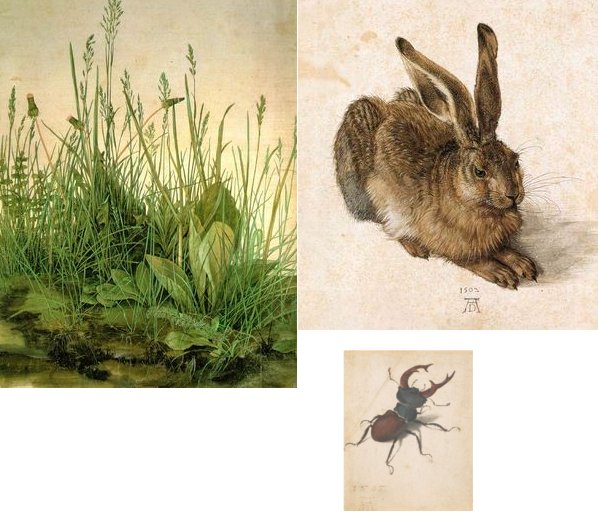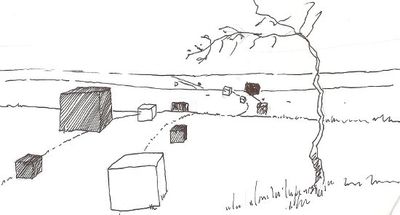Leaf and moss


After the rain


Leaf and moss


After the rain


How can melancholy be cured? The second book is about remedies. Divine providence is, of course a lawful mean, but saint’s relics or images are firmly rejected. Diet is thoroughly discussed, different kinds of food, drinks, the quality of water, how should constipation be addressed [now I know that suppositories were available in the 17th century!]. It feels like reading a health magazine instead of a treatise on depression.
But, as with the case of the “particular utopia”, Burton excels when he speculates and rambles; when writing about the quality of air as a remedy, he indulges in a long digression, to wander around the world with the imagination, like a hawk that flies freely where the curiosity attracts him. He envisages different lands, the species living in them, the currents of the seas. How can be explained that shells or fish bones are found in mountains far remote from all seas? What is the center of the earth like? What size should hell be in order to accommodate all condemned souls? Whence comes the variety of species? [We will have to wait to Darwin to get the right answer] Celestial spheres are challenged; is the earth a living whole (Sit terra animata?); are there infinite worlds? How does God spend his free time? Does He paint butterflies’ wings? Does He decide how many hours should it rain? How much snow? Some make maps of heaven, their offices, how many angels are in each department. Why is it are good and bad punished together? There are some pretend to be familiar with God and tell when the world will come to an end. Other wonder about what was God doing before creating the world. (Theologies, excrements of curiosity).
25 pages later, back down to earth, quality of air is discussed and comes the Section about “Exercise rectified of body and mind”. Moderate exercise is recommended, also travel to nice places (Deambulatio per amoena loca), visit gardens, climb mountains or imagine a travel in time, for example, to become an spectator of one of Cesar’s battles [I wonder when/where would I travel if I could], tourism in different cities or spend the time in some recreation, may be catching flies as Domitian the emperor, or playing with nuts.
Threre are more possibilities, games, dancing, study, collecting and, of course, books could not be omitted. What man is not attracted by maps? [Burton would have enjoyed Google maps]. Atlases, herbaria, Mathematical works, bestiaria … like King James, who would not be happy in this company? Study is good, provided we do not exceed in it, like Don Quixote. To medidate upon the Bible, to learn algebra, to inquire about the movements of the planets, to perform experiments, all is advisable to keep the mind busy … if it is a masculine mind. In the 17th century all that Burton can suggest for women is neeedlework !
In order to rectify the perturbations of the mind, we can rely on the power of music, a merry company, laughter and try to live merrily. I couldn’t agree more.
After reviewing what activities could make us happy, and before opening section IV about cures and remedies, Burton offers another excellent digression, A Consolatory Digression containing the remedies of all manner of Discontents. I wonder whether therapy in the 17thcentury would be like. Let’s comfort ourselves by considering all possible bad things. In life, joys and sorrows are annexed, and succeed one another. If we summed the miseries and calamities that affect all men, and then divide them equally, would we share alike, or take our portion? Those who think they are unfortunate because of poverty should be reminded of all that can be enjoyed without money, and being free; maybe it’s happier the one who desires less than the one who has more. The section is completed with a list of divine precepts, truly a 17th century self help manual. Know thyself, don’t be idle, be contented with thy lot, hear much, speak little.
The drug section (the 17th century prozac) offers medicinal plants and precious stones that are carried hanged around the neck [don’t laugh, people still buy them today). One of the authorities mentioned is Arnau de Vilanova. Besides drugs, other medical actions are purging, suppositories, clysters, leeches for haemorrhoids. He does not write recipes in vernacular tongue in order to prevent self medication. Burton does not forget anything he has read about, and, for example, adds that now and then is good to be drunk, tobacco, coffee or strange potions that involve a ring out of a donkey’s hoof, a lamb’s brain cooked with particular species, a wolf’s dung.
The type of residence in the cemeteries, of course, follows the same style we had in life:
Those living in rent apartments in a normal neighborhood go to simple niches.
Those living in mansions, go to pantheons.
With a some black humor, we could say that we leave the cemetery of the living to move to the city of the dead.
cementeriodeleste.blogspot.com/ is an excellent blog about Poblenou cemetery . There are some remarkable sculptures such as the famous “Death’s kiss”.
Others are very unusual, as this homage to someone belonging to the Roman Heredia family, a natural size marble sculpture, complete with sunglasses and whiskey bottle.
The most popular tomb is that of Francesc Canals, el Santet del Poblenou (the little saint of Poblenou), about whom there is not much known other than he worked at “El siglo” store and was very kind to everyone. He died in 1899 at the age of 22 and very soon people started to believe that he helped those in need that asked for some favor. This popular devotion is still alive today. Lots of candles and images are found around his tomb. People write what they need in little pieces of paper. One day I was talking with a woman that had just lit some candles. A couple of them were for some particular favors she asked but the other ones, she brought them to the “Santet” for other people that could be in a distress. Isn’t that a generous attitude?
Another nice attitude can be found in Cassen’s tomb, Casto Sendra Barrufet, a comic actor: Quien bien te quiere te hará reir. In Spanish they say “Quien bien te quiere te hará llorar” (those who care about you will make you cry), as if education, or the way to a right life could only be taught by punishment. He changed it to “Those who care about you will make you … laugh”. I couldn’t agree more.
Near the cemetery there is a marble workshop where they can make either a kitchen countertop or a tombstone. They work for the cemetery of the living and for the city of the dead. I wonder if I could ask to transform my kitchen countertop in my own tombstone with an engraving “here was lunch and dinner prepared …”.
Sperate miseri Unhappy hope
Cavete felices Happy be cautious
“Be not solitary, be not idle.”
Those are the last sentences of the formidable “The Anatomy of melancholy” by Robert Burton (1576 – 1640), vicar at St. Thomas, Oxford, a mind of unlimited curiosity that could be satisfied with free access to the Bodleian library. I do recommend buying the book and reading it. Here it is available online. In several posts I’m going to present an abstract with links pointing to a selection of quotes.
The work goes beyond what would be a treatise on melancholy, what perhaps today would be cataloged as a depression disorder. In around 1.400 pages, besides discussing its causes and considering its possible cure, Burton, this tireless reader, presents the show of human fortunes and misfortunes, offers a lucid analysis of our follies, looking at us as if we were an ants’s nest and sometimes reminds us of Erasmus.
Who among us is not a fool ? We don’t know whether to weep, with Heraclitus, or laugh with Democritus. Burton says that Democritus would go on laughing in his era, in the 17th century; and I dare to say that he would amuse himself in our times; we get our souls repaired through different therapies, we apply diy solutions consulting self-help books, we long for the “authentic” experiences in prefabricated adventures to exotic destinations, we undergo plastic surgery to appear more attractive, we take stimulants to be more alert and sleeping pills to go to sleep, antidepressants …
It is a long reading, not always easy but most often fascinating. Burton writes about melancholy to escape from it, a trip along the diverse landscapes of human condition, with bitter critics towards religion and superstition, and laments for bloody wars. Burton is to admire when he renders and filters his vast readings and when he observes the behavior of the humans around him. But he is irresistible when he writes what he likes and speculates wildly. So he asks, what would be Hercules agenda on the 17th century? [what are the most important tasks?] He does not stop here but formulates his “particular utopy”, 25 pages in length, detailing how cities would be planned, rivers, houses, schools, universities or roads.
The first book describes melancholy in general and its causes. No one would be free of it; the expression “melancholy, the character of mortality” is devastating. [It is really inherent to human condition? An unavoidable consequence of the ability to imagine? To be able to imagine a life without death, decrepitude, or the possibility of imagining a life without so many errors committed, without having caused pain, or may be just a life with a bit of luck …]. It agrees with the famous Aristotle/Theophrastus Problema XXX.1 that states all men of genius have been melancholics and that they have a powerful imagination.
An introduction reviews anatomy and general diseases, offers a definition of melancholy and then Burton proceeds to discuss the causes. Our avid reader will list all of them, from life circumstances such as poverty or being in prison, or the fact of getting old and suffer physical decadence and death.
There are also divine causes and our scholar does not omit any kind of demon, actually we have almost a complete study on them and, by the way, a particular one located in Barcino is mentioned. Another curious case involves a possession case that reminds of the vomit scene in the “Exorcist”.
As natural causes, attention must be paid to what is eaten, gluttony, eat too much, or on the contrary, eat too little; evacuation, constipation, hemorrhoids, the quality of the air inhaled, exercise and several kind of activities ad last but not least, sleep.
Probably Burton speaks out of its own experience when he warns about the risks of study and solitary contemplation. Passions of mind, joy, desire, sorrow, fear are also a source of melancholy. We are never satisfied with what we have. We can become obsessed with hunting, eating or spending our wealth in mad buildings.
He can speak about the miseries of scholars out of his own experience and does not miss the opportunity to criticize ferociously the university, an institution that admits whoever has money and graduates fools that only learn some things by the heart after spending some years chopping logic.
When Burton reprobates the excess of curiosity, the time spent in researching superfluous matters, I can’t help thinking that he is not sincere, for it’s obvious that he enjoys it immensely. Other causes discussed are education, slander, imprisonment, poverty; blame on money that seems to have the power of buying anything.
The last part of this book deals with symptoms. Prudently, he advises potential hypocondriacs affected of melancholy to skip it because its reading could worse their condition. There are interesting references to Dürer’s engraving (see the post about Klibansky, Panofsky and Saxl book about Saturn and melancholy), Saturn and Aristotle’s Problema XXX.1 where the hypothesis relating genius, madness and melancholy is formulated.
It’s almost 30 years since I bought a copy of the engraving Melencolia I by the Deutsche Druckerei , during a trip in Germany, fascinated by the meditative expression of the figure, and the perception that thre was a message hidden in the objects around her. Ten 10 years later I bought the book “Saturn and melancholy,” by Klibansky, Panofsky and Saxl, originally published in 1964, but it was not until recently that I found the opportunity to read it. It locates Dürer’s engraving in the context of evolving conceptions about Saturn and melancholy.

Dürer would have merged the representation of a Saturnian melancholy, a dark face, head leaning on the hand, with the representation of geometry as a liberal art, a figure with geometric and mathematical tools. The essay’s hypothesis is that Melencolia I engraving follows an idea of Agrippa von Nettesheim exposed in Occulta Philosophia, and corresponds to a certain melancholia imaginativa, the first stage of a group of three, the other two being malencholia rationalis and melancholia mentalis.
The ancients related four body fluids or humors to different combinations of basic properties. This is consolidated with Hippocrates and Galen and four temperaments or moods:
Blood hot, wet sanguine
Yellow bile hot, dry choleric
Black bile cold, dry melancholic (melan = black, cholic = bilis)
Phlegm cold, wet phlegmatic
Theophrastus, the probable author of Problemata XXX.1 (formerly attributed to Aristotle) proposed a theory about genius stating that black bile had the property of amplifying faculties or emotions, as it could become very cold or very hot. When cold it would lead to clumsiness while when hot it would raise us to rapture and, in excess, to insanity. Those that stay away from the extremes would be “superior to others in terms of mind sharpness or in arts”. Cold in excess would induce depression and suicide. An alternative point of view about genius , with no relation with black bile, is proposed by Plato in Phaedrus; “divine madness”, a certain state of ecstasy that allows the philosopher, the lover or the poet to grasp pure Forms beyond reason.
This conception of melancholy was not shared by everyone. The Stoics and later, Galen, considered melancholy as a disease. Instead of a certain humor that could enable genius or depression, the thesis was inverted; sadness and depression would be an outcome of an excess of intellectual activity. Saturn, overthrown by his sons, was associated with agriculture, old age, coldness, covetousness, selfishness and melancolics. In late antiquity and the Middle Ages prevails this negative sense, although for neoplatonics Saturn was related to intellect (represented as a god that meditates, the head leaning on the hand), and for the orphics it was the architect of the world.
Marsilio Ficino, neoplatonist, was the first to relate Plato’s furor divinus with melancholy. Like body and mind, connected through a subtle fluid called spiritus, the whole universe was like a huge organism, with a universal mind connected to a universal matter through a certain spiritus mundanus. Mens imaginativa was attributed to Mars, mens rationalis to Jupiter and mens contemplativa to Saturn.
In Dürer’s engraving we find symbols related with the depiction of melancholy: the key and the purse, symbols of wealth and power, the closed fist for the covetous and, clearly, the head leaning on a hand. The dog, the bat and the marina with ships are interpreted as Saturn symbols. The garland on the head could be an antidote against saturnian melancholic’s depression, perhaps, white water-crowfoot, or watercress . Number 4 in the magic square would be an invocation to Jupiter. We find also symbols corresponding to the representation of geometry as one of the seven liberal arts, either concerning theory (the sphere, the book, the ink), descriptive geometry (the famous rhombohedron) or practical uses (the cabinetmaker tools, the hammer, the plane, the tongs).
In Occulta Philosophia, Agrippa follows Ficino’s idea that the powers of terrestrials things are “emanations from a divine unity transmitted by planets” and also other daemons of inferior rank. After dealing with astrology and talismans, in the third book he introduces Vaticinium, direct revelation, when “the soul, inspired by superior powers, meets the ultimate grounds of this world and the next one, and miraculously sees all that is, has been, or will be in a remote future.” This is only possible when the soul is not busy in other activities (vacat). This “vacatio animae” can take three forms: true dreams (somnia), elevation of the soul through contemplation (raptus), and enlightening of the soul by daemons (furor). This furor reminds of Plato and can proceed from the muses, Dionysos, apollo, Venus or melancholy.
So, there would be three melancholy stages. The first one corresponds to the faculty of imaginatio, mechanical arts such as architecture or painting and it could foretell about natural disasters like floods (something depicted in the engraving!). The second one relates to the faculty of ratio, knowledge of natural and human things and could make profecies about politics events. In the third one we find the mens, the knowledge of divine secrets, angeology and theology; it could make predictions about religious events. Dürer’s engraving would illustrate the first stage. This would explain the “1” qualifying the title.
Dürer was very interested in the art of measurement and wrote a book explaining its utility, not only for “painters, but also for goldsmiths, sculptors, masons and carpenters”. Geometry was the model for sciences. In his thirties, impassioned by the possibitities of art theory learned from Jacopo de Barbari, he believed that perhaps he could define universal and unique beauty with the help of compass and square.
[Was this the project of the Dresden Sketchbook?]

Ten years later, and just before attempting the engraving M1, he would wrote in the Nachlass “what is Beauty, I don’t know […] there is no man alive on earth who can tell or prove what could be the most beautiful human figure. Only God can judge Beauty […] I think there is no man alive who can contemplate the ultimate beauty even in a small creature so even les could he in a human being […]
[ I wonder, when Dürer was writing this, was he thinking of the humble and sublime turf watercolour? or the hare?]

“But God knows about these things, and if He feels like revealing it to someone, this person will know it too. .. But I can not prove any particular measure that gets close to supreme beauty”.
Other than the illustration of Agrippa’s ideas, in Melencolia 1 there is, perhaps, a trace of the fatigue caused by the quest in search of abolute beauty, the hands loose its grip on the geometrical compass, and atired gaze is lost in the horizon.
In my last trek I forgot my camera. Sketches and notes were the only way to retain landscapes and experiences. I wanted to try the site www.artsteps.com the allows to create online 3D exhibits. This is the result.
I guess I was around 15 when I read, fascinated, those first lines from Okakura Kakuzo’s Book of Tea. Since then, countless cups of tea have been present in different moments of the day, at breakfast, reading or studying in the afternoon, walking among plants in the terrace, eating a tart, at home or, when travelling, high tea in a glamorous hotel, or on a bunk in a train compartment. Now, I realize that during all those years I have assembled enough items related with tea as to think of them as a little museum.
| A teapot bought at Vinçon, 25 yars ago. The lid broke. | |
| A modern style tea, coffee set, through ebay. Nice solid metal pieces, wooden handles. | |
| An Imari teacup, around 1920, fine british china. | |
| A beautiful teapot bought in a street market in Xian in 2005. A cup with a lid (gaiwan) bought in ChengDu. In some parks, people pay for an amount of tea leaves in a gaiwan. Then an assistant serves every table with boiling water. People spend there hours, chatting and drinking. | |
| The Gongfu way for preparing tea appears in LuYu’s classic book in the 8th century. A small teapot, around 150 ml, out of Yxing clay if possible, filled with lenough leaves so that they occupy of the volume when expanded by the action of hot water. Infusions are short, around 30 secs for the first cup. Oolongs are the preferred teas for this method. | |
| Two delicate celadon cups. | |
| The MingCha tea collection, to initiate in different Oolongs tasting, Tie Guan Yin, Phoenix, Wuyi yan cha, also a Puer, a white and green teas. Bought in Hong Kong. F. Amalfi. Todos los tés el mundo. | |
| If you have been in China you will recognise this flask, and the popular jasmine tea. | |
| The gorgeous iron cast teapots, or tetsubin, that here are selled in fancy shops, in Japan can be found in simple hardware stores! | |
| Tools for preparing the matcha, the bamboo scoop or chashaku, and the whisk or chasen. | |
| A modest raku bought in Kyoto after long deliberation. The picture does not make justice to the subtle tones of granate mixing with black. The container box is a beautiful object in itself. | |
| Indian tea, bought in Varanasi, and species used fro preparing, with milk and sugar, this sweet and specied drink so different from the teas we drink normally. | |
| If some time ago, all russian homes had a samovar for tea, now they have been replaced by modern, plastic models with a thermostat. I could not help buying a traditional samovar made in Tula. I guess I wanted to have the feeling of sharing a tradition. | |
| Two exceptional books, the already quoted Book of Tea by Okakura Kakuzo, and Luyu’s venerable The classic of Tea. | |
In Urgell plain, almond trees fields are, fortunately, quite common, with olive and fruit trees. A simple bike route, to enjoy their sight: From Arbeca to Belianes by L-201, to Bellpuig by LP-2015 and back to Arbeca along Urgell channel. The white flowers in twisted trunks, like an explosion that could almost be heard, on a background of blue sky, a white and dry land, green grass, or little withe flowers on the floor that look like a mirror.

When looking at this picture one could think that it is an aerial snaphot of a dry landscape. Actually it is, if I am not mistaken, an aspen (populus tremula) leaf. With large petioles, aspen’s leaves are easily shaken even by an easy breeze, whence the latin name, “shaky poplar”. Some weeks ago, in Madriu valley in Andorra, a little aspen forest offered this range of colours.
Let’s imagine that this kind of talk would be possible at life’s beginning, before birth, as if we were a indeterminate non-being that can choose about going into existence (let’s forget for an instant the paradox of an indeterminate identity having to choose).
We would be informed about the equipment and conditions of our earthly stay, our genetic code, the strengths and weaknesses: “If you want to enter into existence now, those are your options, you will be a male, medium height, medium intelligence, not exactly an athlete, nor a genius.” We would be informed too about the social environment, in what kind family and in which country are we going to be raised, whether it is in the developed world or the undeveloped. ( the TV series Quantum Leap proposed a similar approach ).

(from Dürer’s Dresden Sketchbook on Human Proportion)
Perhaps we would not be satisfied with just that piece of information, the cards that are dealt out to us. Before betting on the game of life we would inquiry about whether we are going to have a happy life, or an interesting one, whether we are going to experience pain, or frustration; how long are we going to live. Probably a honest answer would not be a completely reassuring one. Some amount of confusion, pain and disappointments are guaranteed. But the list of possibilities of knowing, discovering and enjoy is endless. Saul Bellow said it wonderfully in Ravelstein. If we can, for example, feel the fresh, cold morning air when we open the window to ventilate the bedroom, or the taste of olive oil on a toast, talk with a friend, is that enough?
We could imagine that we are buying the tickets for a certain kind of life trip. Success is not guaranteed and it’s really the ultimate adventure trip, engaging into existence in a particular time, place and human condition. If this was like planning a hike, a hypothetical guide could certainly tell that along the way we are going to find traps, injuries and at the same time, delicious fountains, unexpected views, wonderful presents. But no map with white or black points is given. We can miss wonders placed along the way just because we are still recovering from our last misstep.

We could also imagine that instead of having the choice of entering into existence or not, we would be able to choose what kind of life. This is what Plato considers at the end of the Republic in the myth of Er.
After death, souls are given the chance of choosing a particular kind of life for another cycle, a tyran, an animal, a normal man. Before being born again, souls pass through the plain of Forgetfulness and drink the water from the river of Unmindfulness, so that they don’t remember the process. I wonder what could I choose for my next cycle, or what was I thinking when I opted for my present life.
| Hear the word of Lachesis, the daughter of Necessity. Mortal souls, behold a new cycle of life and mortality. Your genius will not be allotted to you, but you choose your genius; and let him who draws the first lot have the first choice, and the life which he chooses shall be his destiny. […] When the Interpreter had thus spoken he scattered lots indifferently among them all, and each of them took up the lot which fell near him, all but Er himself (he was not allowed), and each as he took his lot perceived the number which he had obtained. Then the Interpreter placed on the ground before them the samples of lives; and there were many more lives than the souls present, and they were of all sorts. There were lives of every animal and of man in every condition. And there were tyrannies among them, some lasting out the tyrant’s life, others which broke off in the middle and came to an end in poverty and exile and beggary; and there were lives of famous men, some who were famous for their form and beauty as well as for their strength and success in games, or, again, for their birth and the qualities of their ancestors; and some who were the reverse of famous for the opposite qualities. And of women likewise; there was not, however, any definite character them, because the soul, when choosing a new life, must of necessity become different. But there was every other quality, and the all mingled with one another, and also with elements of wealth and poverty, and disease and health; and there were mean states also.
Let each one of us leave every other kind of knowledge and seek and follow one thing only, if peradventure he may be able to learn and may find some one who will make him able to learn and discern between good and evil, and so to choose always and everywhere the better life as he has opportunity. The soul which obtained the twentieth lot chose the life of a lion, and this was the soul of Ajax the son of Telamon, who would not be a man, remembering the injustice which was done him the judgment about the arms. The next was Agamemnon, who took the life of an eagle, because, like Ajax, he hated human nature by reason of his sufferings. About the middle came the lot of Atalanta; she, seeing the great fame of an athlete, was unable to resist the temptation: and after her there followed the soul of Epeus the son of Panopeus passing into the nature of a woman cunning in the arts; and far away among the last who chose, the soul of the jester Thersites was putting on the form of a monkey. There came also the soul of Odysseus having yet to make a choice, and his lot happened to be the last of them all. Now the recollection of former tolls had disenchanted him of ambition, and he went about for a considerable time in search of the life of a private man who had no cares; he had some difficulty in finding this, which was lying about and had been neglected by everybody else; and when he saw it, he said that he would have done the had his lot been first instead of last, and that he was delighted to have it. […] |
| Plato. Republic. Book X |